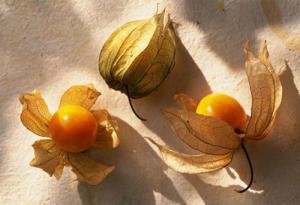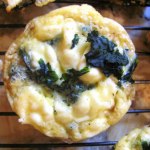 After drinking Caribbean tap water for about 6 months in Cartagena de Indias, Colombia, I ended up with an amoebic infection. Not having a decent healthcare plan in Colombia I had to content myself with visiting the local pharmacist to help me deal with my problem.
After drinking Caribbean tap water for about 6 months in Cartagena de Indias, Colombia, I ended up with an amoebic infection. Not having a decent healthcare plan in Colombia I had to content myself with visiting the local pharmacist to help me deal with my problem.
In Colombia a prescription is not necessary in order to get your hands on a number of really great pharmaceutical creations. I was put on things I couldn’t even pronounce (despite my biochemical education), which the pharmacist told me were killing my amoebas, their eggs and all their little “friends.” These drugs also happened to have a lethal appetite for my colonic bacteria and my enterocytes, leaving me with something I had never really experienced in my life up until then: intestinal problems.
When I moved to the saner, colder climate of the Andes, in Bogota, Colombia, I came to my senses and decided to visit an alternative healthcare professional, Dr. Julian Conti, who saved my life a few times in Bogota and, in fact, inspired me to apply to CCNM and become a naturopath (heart-warming, no?). He put me on a strict diet and told me to eat lots and lots and lots of uchuvas. I had tried uchuvas before and, although I liked them I’d developed distaste for Colombian cuisine (something to do with my amoebas, perhaps?) and, until then, hadn’t really paid much attention to the native fruits that hadn’t made their way to Canada yet.
However, now uchuvas, Physalis peruviana, Goldenberries or Inca Berries, have begun to reach North America and have been picked up as another addition to the happy Superfood Family. Being from the Solanacaea family, which is home to some Italian favourites like tomatoes, eggplants and potatoes, they contain many of the same nutrients as tomatoes and look a little bit like an orange-coloured cherry tomato.
According to Wikipedia (don’t knock it, it’s provided about 1/6th of my first year naturopathic education), uchuvas contain 3000 IUs of pro-vitamin A and are a source of vitamin C and complex B vitamins. They also contain 55% phosphorous and are 0.3% protein, which is high for a fruit.
Uchuvas have various medicinal properties. They contain flavonoids and alkaloids, which makes them anti-parasitic. This makes me want to kick myself for having gone to a pharmacist and taken a cocktail of enterocyte-killing anti-parasitic drugs when I could have had a (delicious) cocktail of anti-parasitic uchuvas. They are acidic and contain digestive properties, which researchers believe may help prevent colon and stomach cancers. They are diuretic and therefore can be helpful for people suffering from prostate issues. They are also indicated for tonifying the optic nerve, treating cataracts and for treating mouth and throat infections.
Uchuvas can be eaten raw and are great fruits for creating juices or smoothies. I’ve seen them sold at Toronto grocery stores such as Fiesta Farms (near Christie and Bloor). If they are too sour for your taste, I’ve seen them sold as dried fruit (by Organic Traditionals) and in marmalades and jams.
While I can’t attest to the fact that they solved my intestinal issues (I made a lot of dietary and lifestyle changes around that time), I can attest to the fact that they are delicious, tropical and Dr. Julian loves them. They also make a fun snack that instantly transports you to South America, whether you have been there or not. Take that, amoebas!








I have the Organic Traditionals version in my pantry. They have a unique, but very sour taste. I bet if I coated them with sugar, they’d taste like Sour Patch Kids. 😛
They do have a unique, sour taste, almost like a weird-tasting dried cranberry. However, I highly recommend the fresh version! Far more tropical! They’re like the cherry tomatoes that decided to become a fruit.
whoah this blog is great i love reading your articles.
Keep up the good work! You realize, many people are hunting around for
this information, you could help them greatly.
Do you mind if I quote a couple of your posts as long
as I provide credit and sources back to your
blog? My website is in the exact same niche as yours and my visitors would definitely benefit
from some of the information you present here. Please let me
know if this ok with you. Cheers!
Sure.
I am extremely impressed with your writing skills
and also with the layout on your weblog. Is this a
paid theme or did you customize it yourself? Anyway keep up the excellent quality writing, it is rare to see a nice blog like this one these days.